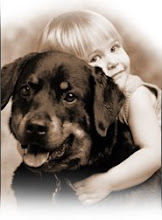Commercial cat food
manufacturers sell frozen raw diets and premix products to cater to owners who feed raw.
Major brand-name dry cat food manufacturers often use primarily grain-based ingredients like corn and rice with meat by-products or animal digest making up the meat ingredients. Some manufacturers offer 'premium', 'natural' or 'holistic' formulas that are by-product free and contains less or no grains. However, grain-free dry diets still contain carbohydrates, from sources such as potato or tapioca as the starch in those ingredients is needed to allow the kibble to hold its shape. Cats have no metabolic need for carbohydrates as the feline system prefers to create glucose from protein.[2]

[edit] Dry food
Dry (Extruded) cat food example
Dry food is generally made by extrusion cooking under high heat and pressure. It may then be sprayed with fat to increase palatability and other ingredients to complete its composition.
Pet owners often prefer dry cat food due to the convenience and price.[citation needed] Besides usually being significantly cheaper, dry cat food can also be left out for the cat to eat at will over the course of several days; whereas, canned or raw cat food spoils or becomes unappetizing after several hours. It should be noted, however, that even dry food, since it is sprayed with fats as noted above, becomes rancid and stale as it oxidizes. Using a free feeding practice can also contribute to overeating, and ultimately obesity.[3]

Dry food is recommended by some based on the idea that cats break apart dry foods with their teeth, which causes the food to scrape off dental calculus. The degree of benefit this provides has been disputed in recent years.[4]
Many dry foods use meals as protein source, such as meat meal, chicken meal, fish meal, or corn gluten meal.[citation needed] This allows manufacturers to produce cheaper foods. Since the occurrence of BSE infection through contaminated meat and bone meal, the use of meat meal in pet foods has been prohibited in parts of the world (e.g. Japan and France) but is still common practice in other parts (e.g. USA).[citation needed] Comparative studies conducted by Japanese researchers have shown that meat meal is superior to the other protein meal sources in terms of dry-matter digestibility and nutritional value for cats, while corn gluten meal is the least nutritional.[5][6][7]
The same studies showed that cats fed with these dry food diets excreted alkaline urine. Urine pH has been implicated in the formation of struvite crystals in feline urolithiasis, and many dry food manufacturers address this by adding urine-acidifying ingredients to their food. However, this practice may lead to the formation of calcium oxalate stones, therefore water intake rather than urine pH appears to be the most crucial factor for the prevention and treatment of feline stones.[8]
pH has been implicated in the formation of struvite crystals in feline urolithiasis, and many dry food manufacturers address this by adding urine-acidifying ingredients to their food. However, this practice may lead to the formation of calcium oxalate stones, therefore water intake rather than urine pH appears to be the most crucial factor for the prevention and treatment of feline stones.[8]
[edit] Wet food
Wet (Canned) cat food example (Fish flakes in jelly)
Canned or wet food generally comes in common can sizes of 3 oz (85 g), 5.5 oz (156 g), and 13 oz (369 g). It is also sold in foil pouch form by some manufacturers.
Owners and veterinarians who recommend a diet consisting largely or entirely of canned, homemade or raw cat food point to higher water content of such food and the increased total water consumption in comparison to a dry food diet as an important health benefit. Wet food also generally contains significantly less grain and other carbohydrate material, although many are made with fish ingredients. Excessive consumption of fish (which contains high levels of unsaturated fatty acids) can cause yellow fat disease.[9] In comparison to dry food, canned food is thought to either help treat or noticeably reduce the likelihood of numerous health issues including urinary tract disorders[10][11], diabetes, chronic renal failure[12], constipation (sometimes leading to megacolon), and obesity.[citation needed]
Canned cat foods in pop-top containers may play a role in the development of hyperthyroidism in cats[13]. This may be due to bisphenol A used in the pop-top can coating leaching into the food.[14
Labels: Commercial cat food


0 Comments:
Post a Comment
Subscribe to Post Comments [Atom]
<< Home